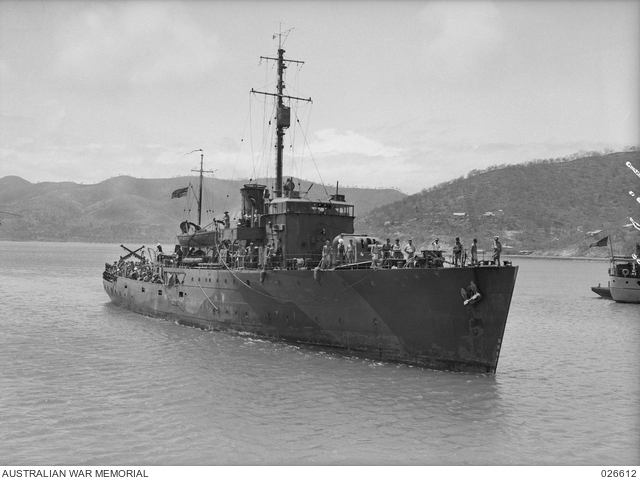Allies in adversity, Australia and the Dutch in the Pacific War: The loss of the Armidale
By November 1942, the mixed Dutch and Australian force on Timor had been pursuing its guerrilla war against the Japanese for more than seven months. Supplies were low, and the men were sick and exhausted. A proposal from Australia suggested that the 160 remaining KNIL troops on the island be evacuated and replaced by a smaller force – “Lancer Force” – of only 60 men, fully equipped and prepared for the conditions they would face. Even this small force fully taxed the limited manpower resources of the KNIL in Australia, burdened as they were with requests for interpreters, liaison officers, and men for the Netherlands East Indies Forces Intelligence Service (NEFIS). This commitment to Lancer Force was the largest undertaken by the Dutch army during its time in Australia.
On 29 November, the corvettes HMAS Castlemaine and Armidale and the small motor vessel HMAS Kuru departed Darwin for Timor. Armidale was carrying the Dutch reinforcement force, while the task of the other two vessels was to help transport the mixed Dutch, Australian, and Portuguese party awaiting evacuation to Australia. Owing to Japanese air attacks, the intended rendezvous of the three ships at Betano Bay, on the south coast of Portuguese Timor, was not made, and the most of the waiting men withdrew into the jungle. It was decided instead that Castlemaine would be sent back to Darwin with the few evacuees already collected, while Armidale and Kuru would return to the Timorese coast.
At 1 pm on 1 December, Japanese aircraft discovered the Armidale, and it was attacked and sunk, with heavy loss of life. The survivors were then machine-gunned in the water, leaving only 73 of the crew and 26 of the KNIL party alive. A motor boat and a badly damaged whaler had survived the sinking, and in the next few days they set out on attempts to reach Australia. A number of rafts supported the remaining 47 survivors, but disagreements between the two nationalities eventually led them to separate, the Dutch in a Carley float and the Australians on makeshift rafts or clinging to wreckage in the water.
On 6 December, the men in the motor boat (nine sailors and three Dutch soldiers) were rescued by HMAS Kalgoorlie. Three days later, the survivors aboard the whaler were also picked up. The two remaining parties were sighted by a Catalina flying boat on 8 December, but the aircraft was unable to land; contact was lost, and the men were never seen or heard of again. At a stroke, the Armidale tragedy had eliminated the bulk of the KNIL’s fighting strength in Australia.
In 1998, artist Jan Senbergs collaborated with Armidale survivor Col Madigan to produce a series of paintings telling the story of the sinking.
The corvette HMAS Armidale at Port Moresby in September 1942. At the time of its loss, Armidale had been in service for only six months.
This photograph, taken by an RAAF Catalina flying boat on the evening of 8 December 1942, shows survivors of the Armidale waving to the circling aircraft. The sea conditions would not permit a landing, and the feelings of the group as they watched salvation fly away can scarcely be imagined. Despite intensive searches, none of these men was ever seen again.

